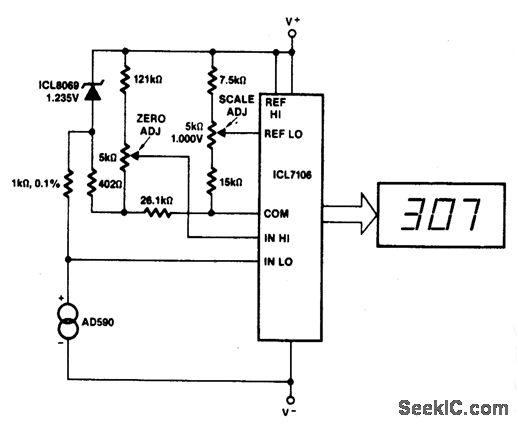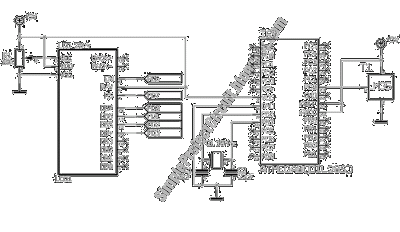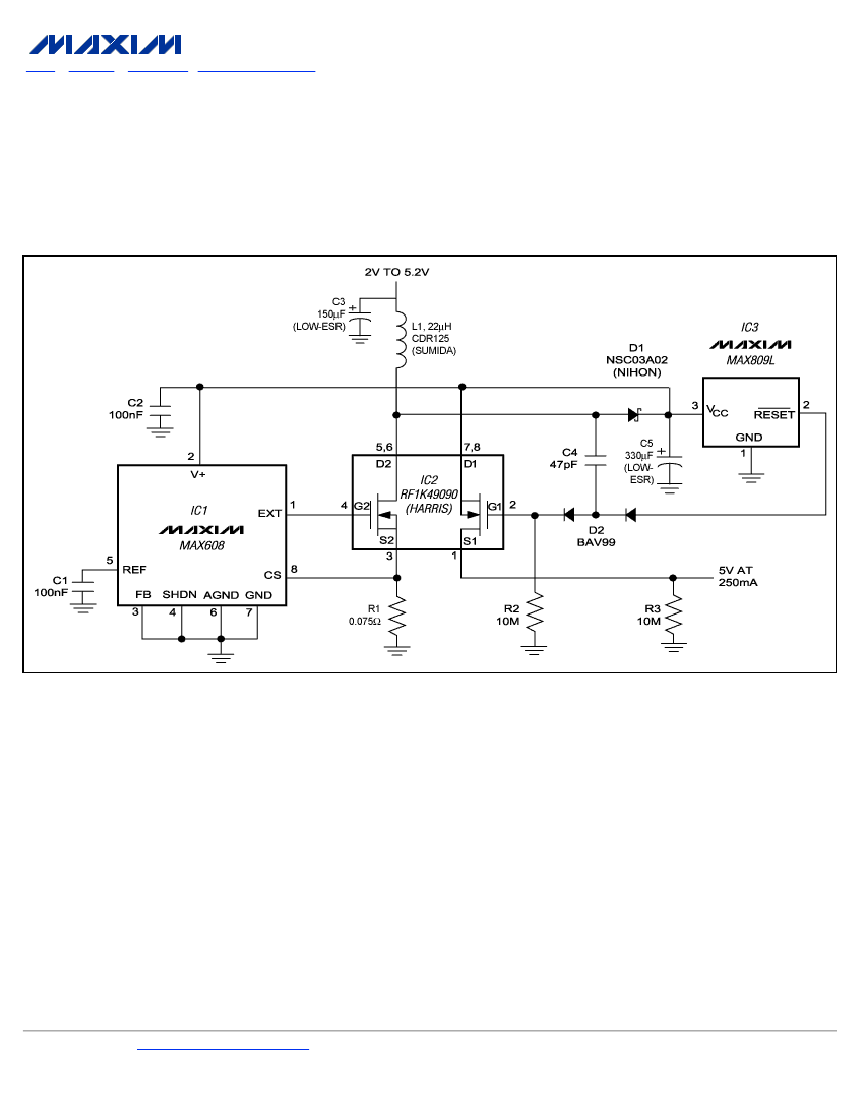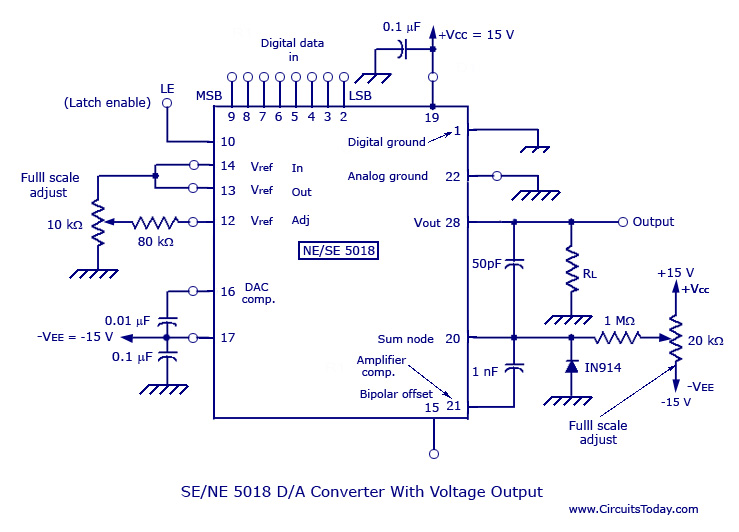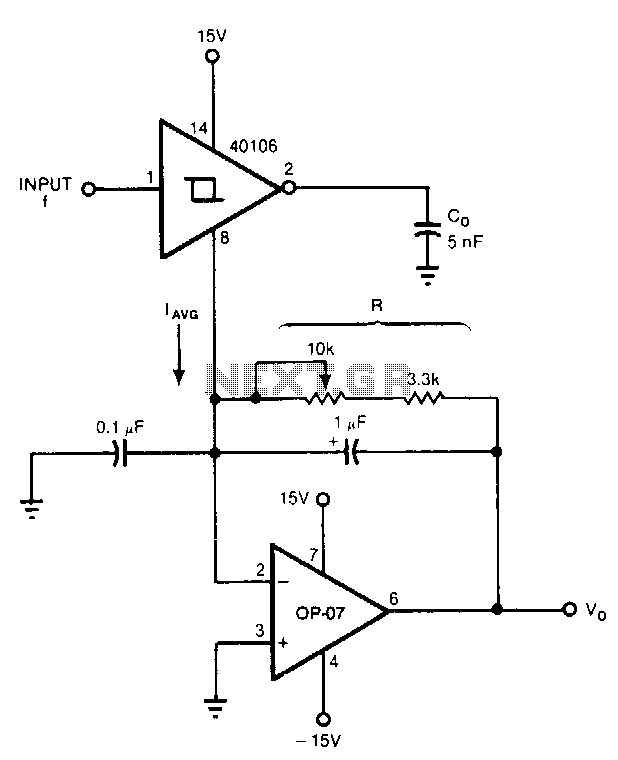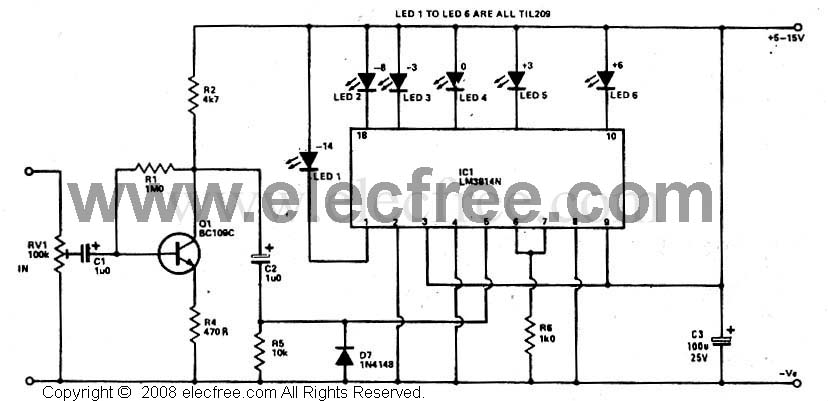
converter voltmeter to frequency meter

This design circuit is for converting voltage to frequency. Typically, frequency meters are used in speed sensors, tachometers, and for measuring recurring signals. The frequency to voltage converter (FVC) can transform voltage into either a digital or analog tachometer. The circuit consists of three blocks. The first block is a squarer that converts the input signal into a square wave. This block protects the circuit from high input voltages up to 400V, provided that the capacitor C1 is rated for 400V. The input impedance is approximately 560k, allowing safe connection to the ignition pick-up coil in parallel with the capacitor discharge ignition (CDI) circuits. Voltage spikes are mitigated by Zener diode D3. The second block is a retriggerable monostable multivibrator, which converts fixed-width pulses to provide an output. The average output voltage depends on the duty cycle of the input waveform and is solely determined by the input frequency. The pulse width is defined by R9, R5, and C4. According to the IC 4528 datasheet, the period of the monostable is calculated as R and C in ohms and farads, respectively, with VDD-VSS being the voltage at pin 16 minus the voltage at pin 8, and t in seconds. The minimum value of R9 results in a monostable multivibrator output pulse width of approximately 5.139e-5 seconds, converting a frequency of 19.460 kHz to a 12V output, yielding a conversion factor of 1.622 kHz/Volt. Setting the maximum value of R9 (100k) results in a pulse width of 1.145 ms, providing a maximum voltage output of 12V at 874 Hz, or about 72.8 Hz per Volt conversion. This flexibility allows the tachometer to accommodate a wide range of engine types. The final block is a first-order low-pass filter around U2, with a time constant of about 0.1 seconds set by R6 and C5. While this slower response time may limit the ability to read frequencies below 10 Hz, it is suitable for various applications. Although the schematic does not depict a decoupling capacitor for bypassing supply line noise for U3, it is advisable to add a 100nF capacitor close to the power pins (pins 8 and 16) due to the sensitivity of the monostable multivibrator to noise.
The circuit design effectively integrates multiple stages to achieve voltage-to-frequency conversion, making it suitable for applications in automotive and industrial environments. The squarer stage ensures that the input signal is appropriately conditioned, protecting sensitive components from high voltage levels. The inclusion of a Zener diode for voltage spike protection further enhances the reliability of the circuit.
In the second block, the use of a retriggerable monostable multivibrator allows for precise control over pulse width, which is critical in applications requiring accurate frequency measurement. The calculated pulse widths and their corresponding output voltages demonstrate the versatility of the design, accommodating a wide frequency range and allowing for easy calibration to different engine types.
The low-pass filter in the final block smooths the output signal, ensuring that the voltage readings remain stable and free from high-frequency noise, which is essential for accurate tachometer readings. The recommendation to include a decoupling capacitor highlights the importance of noise management in sensitive electronic circuits.
Overall, the circuit is well-structured to provide reliable voltage-to-frequency conversion, making it a valuable tool for speed sensing and tachometric applications across various fields.This is design circuit for converter meter voltage to frequency. Normally we often encountered the frequency meter can be used in speed sensor, tachometer, measurement or signal recurring. This frequency to voltage converter (FVC) can be used to change the voltage into a digital or analog tachometer.
Circuit that is consists of three blocks. The f irst block is squarer, the input signal to a square wave. This block was protected the circuit from high input voltage up to 400V, but remember this only works if the value of capacitor C1 is for 400V. Input Impedance around 560k, so it is safe to connect the ignition pick-up coil in parallel with the CDI (capacitor discharge ignition) circuits without a problem.
Supply is protected from voltage spike by Zener diode D3. This is the figure of the circuit; The second block is retriggerable mono stable multi vibrator. Mono stable multi-vibrator is to convert fixed width pulses to provide output, the voltage output of the average will depend on the duty factor pulses input / waveform, but only depends on the input frequency. Pulse width is determined by R9 + R5 and C4. According to the datasheet of IC 4528, the period of the mono stable : R and C are in ohm and Farad, VDD-VSS is in the pin 16 voltage minus the voltage on pin 8, and t in seconds.
Minimal value of R9, the mono stable multi-vibrator output pulse width will be 0. 2 * 4700 * 22e-9 * ln (12) = 5. 139e-5, and this will change the frequency of 19. 460 kHz to 12 Volt output. This gives a conversion factor 1. 622kHz/Volt. If you set the maximum value to R9 (100k) then the pulse width of mono stable multi-vibrator output will 1. 145 MS. This setting will give the maximum voltage output of 12V at 874Hz, or about 72. 8Hz per Volt conversion. If you use the tachometer to the application, wide rage this adjustment will accommodate almost any type of engine.
A last block of the first order low pass filter about U2, about 0. 1 seconds of time set by R6 and C5 constant. With the slow time, you can not read all the frequencies below 10Hz or close, but OK for a variety of applications. Although the diagram does not show the scheme decoupling capacitor for bypassing the supply line for u3 noise, it`s good to add a 100nF cap u3 as close as possible to the power pin (pin 8 and 16), since the mono stable multi-vibrator is sensitive to such noise.
🔗 External reference
The circuit design effectively integrates multiple stages to achieve voltage-to-frequency conversion, making it suitable for applications in automotive and industrial environments. The squarer stage ensures that the input signal is appropriately conditioned, protecting sensitive components from high voltage levels. The inclusion of a Zener diode for voltage spike protection further enhances the reliability of the circuit.
In the second block, the use of a retriggerable monostable multivibrator allows for precise control over pulse width, which is critical in applications requiring accurate frequency measurement. The calculated pulse widths and their corresponding output voltages demonstrate the versatility of the design, accommodating a wide frequency range and allowing for easy calibration to different engine types.
The low-pass filter in the final block smooths the output signal, ensuring that the voltage readings remain stable and free from high-frequency noise, which is essential for accurate tachometer readings. The recommendation to include a decoupling capacitor highlights the importance of noise management in sensitive electronic circuits.
Overall, the circuit is well-structured to provide reliable voltage-to-frequency conversion, making it a valuable tool for speed sensing and tachometric applications across various fields.This is design circuit for converter meter voltage to frequency. Normally we often encountered the frequency meter can be used in speed sensor, tachometer, measurement or signal recurring. This frequency to voltage converter (FVC) can be used to change the voltage into a digital or analog tachometer.
Circuit that is consists of three blocks. The f irst block is squarer, the input signal to a square wave. This block was protected the circuit from high input voltage up to 400V, but remember this only works if the value of capacitor C1 is for 400V. Input Impedance around 560k, so it is safe to connect the ignition pick-up coil in parallel with the CDI (capacitor discharge ignition) circuits without a problem.
Supply is protected from voltage spike by Zener diode D3. This is the figure of the circuit; The second block is retriggerable mono stable multi vibrator. Mono stable multi-vibrator is to convert fixed width pulses to provide output, the voltage output of the average will depend on the duty factor pulses input / waveform, but only depends on the input frequency. Pulse width is determined by R9 + R5 and C4. According to the datasheet of IC 4528, the period of the mono stable : R and C are in ohm and Farad, VDD-VSS is in the pin 16 voltage minus the voltage on pin 8, and t in seconds.
Minimal value of R9, the mono stable multi-vibrator output pulse width will be 0. 2 * 4700 * 22e-9 * ln (12) = 5. 139e-5, and this will change the frequency of 19. 460 kHz to 12 Volt output. This gives a conversion factor 1. 622kHz/Volt. If you set the maximum value to R9 (100k) then the pulse width of mono stable multi-vibrator output will 1. 145 MS. This setting will give the maximum voltage output of 12V at 874Hz, or about 72. 8Hz per Volt conversion. If you use the tachometer to the application, wide rage this adjustment will accommodate almost any type of engine.
A last block of the first order low pass filter about U2, about 0. 1 seconds of time set by R6 and C5 constant. With the slow time, you can not read all the frequencies below 10Hz or close, but OK for a variety of applications. Although the diagram does not show the scheme decoupling capacitor for bypassing the supply line for u3 noise, it`s good to add a 100nF cap u3 as close as possible to the power pin (pin 8 and 16), since the mono stable multi-vibrator is sensitive to such noise.
🔗 External reference
